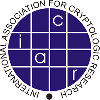Tourism in Leuven
The city of Leuven has a very complete website with lots of practical and tourist information. See also the wikipedia entry.
If you want to understand Belgium, Keith Martin's page on the country is the most accurate report to date. An even more objective view is offered by our overseas friends or by wikipedia.
There are close to 200 cafes and bars in Leuven; here is a nice selection (hint: click on View Larger Map). Before going, read the beer tasting notes of an ex-visitor who is now enjoying warm beer in an even more rainy country.
Short history of Leuven
Pictures and text are copyright © of the city of Leuven.
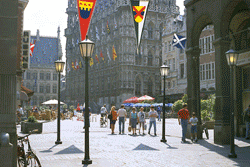 Leuven is very proud of both its past and its heritage, and rightly
so. There is so much to see and to do in and around Leuven that one
visit is simply not enough.
Leuven is very proud of both its past and its heritage, and rightly
so. There is so much to see and to do in and around Leuven that one
visit is simply not enough.
Although the first references to the town can be traced back as far as the 9th century and in spite of its strategic location on the river Dyle, it was not until around the 11th-12th century that Leuven began to develop as an important trading centre within the Duchy of Brabant. It was at this time that its first town wall, churches, monasteries and abbeys were built.
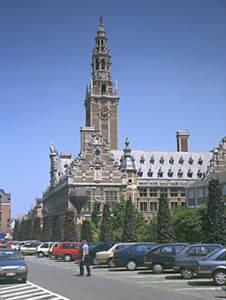 The town's once flourishing cloth trade had fallen into decline by
the 14th century, but a new golden age dawned with the 15th century.
The university was founded, various industrial concerns flourished and
the main market square with its fine Gothic town hall was laid out.
The town's once flourishing cloth trade had fallen into decline by
the 14th century, but a new golden age dawned with the 15th century.
The university was founded, various industrial concerns flourished and
the main market square with its fine Gothic town hall was laid out.
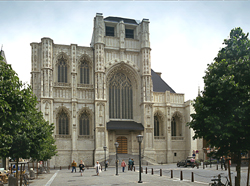 Its finely sculpted Town Hall and Saint Peter's church with its
magnificent interior which is hung with the famous 'Last Supper' by
Thierry Bouts, are fine examples of flamboyant Gothic architecture at
its best. Dating from the same period are the Cloth Hall, 't Sestich
House and many churches, including St Gertrude's with its magnificent
choir stalls.
Its finely sculpted Town Hall and Saint Peter's church with its
magnificent interior which is hung with the famous 'Last Supper' by
Thierry Bouts, are fine examples of flamboyant Gothic architecture at
its best. Dating from the same period are the Cloth Hall, 't Sestich
House and many churches, including St Gertrude's with its magnificent
choir stalls.
Other architectural styles are not quite so much in evidence, but they can still be found. The Romanesque Gate, the Saint Lambert's church and the remains of the first town walls are still clearly in evidence.
The 13th century beguinage complex has cobbled streets and fascinating 17th century houses.
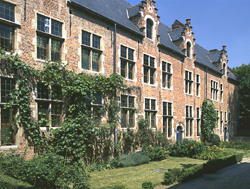
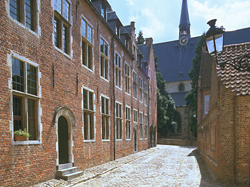
The Baroque style abounds in Leuven, from St Michael's church and the interior of the St John the Baptist's church to the unrivalled stucco of the Park Abbey. Both the Park Abbey and the Arenberg Castle are exciting mixtures of architectural styles.
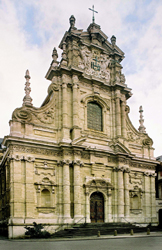
The town still owes much of its character to the numerous university college buildings dating from the 16th and 17th centuries, many of which were renovated in the 18th century. The Van Dale College is pure Renaissance style and the College of the Falcon, Pope's College and the Arras College are neo-classical style. Vlierbeek Abbey is a fine example of this trend.
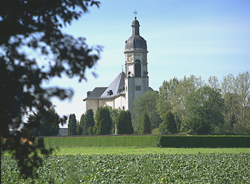
The building of paved roads, the canal in the 18th century and the expansion of the brewery created a great impetus for trade and population growth. Unfortunately, this prosperity came to a sudden end under the reign of Joseph II when the French invaded.
The most significant development for Leuven in the 19th century was the building of the railway station and the construction of Bondgenotenlaan leading to it.
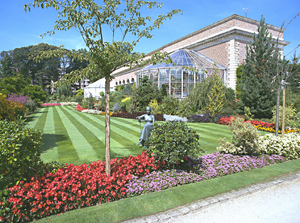
The two World Wars in the 20th century destroyed much of Leuven and a great deal of the reconstruction work lasted well into the nineteen-sixties.
Leuven has developed into a well-equipped, modern town with a thriving service industry economy and with a good balance of old and new buildings combining to offer a well-designed infrastructure to suit the demands of today's modern town with a rich tradition.
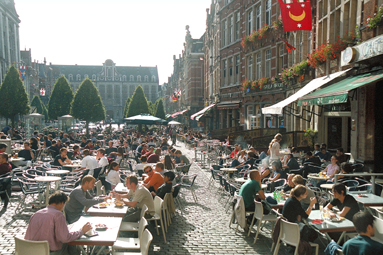
On January 1st January 1995, Leuven became the capital of the province Flemish Brabant.
The former province of Brabant was split into Flemish and Walloon Brabant and the metropolitan region of Brussels.
About the K.U.Leuven
Pictures and text are copyright © of the Katholieke Universiteit Leuven.
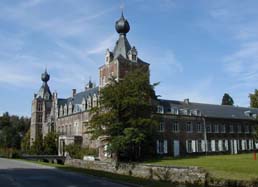 Situated
at the heart of Western Europe, K.U.Leuven has been a centre of learning
for almost six centuries. Founded in 1425 by Pope Martin V, K.U.Leuven
bears the honour of being the oldest Catholic university in the world
still in existence and the oldest university in the Low Countries.
Situated
at the heart of Western Europe, K.U.Leuven has been a centre of learning
for almost six centuries. Founded in 1425 by Pope Martin V, K.U.Leuven
bears the honour of being the oldest Catholic university in the world
still in existence and the oldest university in the Low Countries.
In its early days this university was modelled on the universities of
Paris, Cologne, and Vienna. In a short time it grew into one of the largest
and most renowned universities in Europe. Its academic fame attracted
numerous scholars who made valuable contributions to European culture.
Allow us to enumerate a few renowned names. In the sixteenth century the
humanist Desiderius Erasmus lectured here, where he founded the Collegium
Trilingue in 1517 for the study of Hebrew, Latin, and Greek - the first
of its kind. The tutor of the young emperor Charles V, Adriaan Cardinal
Florensz of Utrecht, was a professor here before being elected in 1522
as the last non-Italian Pope before Pope John Paul II. The philologist,
legal scholar, and historian Justus Lipsius taught here for many years.
The mathematician Gemma Frisius helped to lay the foundations of modern science and tutored many famous scientists, including the cartographer Gerard Mercator, whose map projection is still in use, the botanist Rembert Dodoens, and the father of modern anatomy, Andreas Vesalius. In a later period, the theses of the Leuven theologian Cornelius Jansenius provoked huge controversy both inside and outside the Church. In the seventeenth and eighteenth centuries, K.U.Leuven was an important training centre for Roman Catholic intellectuals from Protestant countries. At the end of the Age of Enlightenment, in 1783, the chemist Pieter Jan Minckelers discovered the suitability of coal gas for lighting. In the nineteenth century, at the instigation of Pope Leo XIII, K.U.Leuven became an important centre of Thomist philosophy.
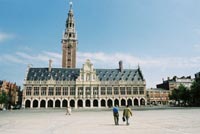 Not
all has been trouble-free, though, in the university's illustrious history.
It has had its share of difficulties during the various social and political
upheavals in this region from the sixteenth to the nineteenth centuries.
More recently, the two World Wars of the twentieth century deeply scarred
the university. In 1914, the University Hall with its precious library
was set in flames by German troops and 300,000 books were reduced to ashes.
Afterwards, an international solidarity campaign with a major American
contribution helped construct a new
library on the present Ladeuzeplein. Unfortunately this library was
burned down in 1940 during the Second World War and this time only 15,000
of its 900,000 volumes were saved. Since then, the university
library, and in fact the entire university, has undergone a thorough
reconstruction.
Not
all has been trouble-free, though, in the university's illustrious history.
It has had its share of difficulties during the various social and political
upheavals in this region from the sixteenth to the nineteenth centuries.
More recently, the two World Wars of the twentieth century deeply scarred
the university. In 1914, the University Hall with its precious library
was set in flames by German troops and 300,000 books were reduced to ashes.
Afterwards, an international solidarity campaign with a major American
contribution helped construct a new
library on the present Ladeuzeplein. Unfortunately this library was
burned down in 1940 during the Second World War and this time only 15,000
of its 900,000 volumes were saved. Since then, the university
library, and in fact the entire university, has undergone a thorough
reconstruction.
The University is located in Flanders, the Dutch-speaking northern part of Belgium. With the Dutch language's steady rise to renewed prominence, the university was eventually split in 1968 into two new universities. The French-speaking Université Catholique de Louvain moved to the newly built campus in Louvain-la-Neuve. The Dutch-speaking Katholieke Universiteit Leuven remained in the historic town of Leuven.
